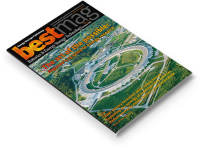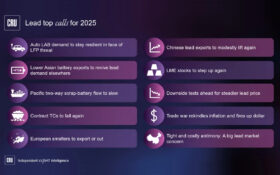The lead industry has urged the European Commission not to follow a recommendation to include lead metal in the REACH Authorisation List. If the proposal from the European Chemicals Agency (ECHA) were adopted, it would have “severe consequences for a broad range of strategically important European industries and applications,” said the lead lobby.
A statement from the International Lead Association and the Lead REACH Consortium, which represents companies in the lead and lead value chain, said: “In many economically and socially important applications the use of lead is not only unavoidable it is essential and extensively regulated.”
It said including lead in the REACH Authorisation List would add red tape, and stifle innovation and investment from the critical EU Industries that still rely on its use.
Companies wanting to continue using a substance included in the Authorisation List after it is prohibited need to apply for authorisation from the European Commission.
The lead industry statement said the EU already has a comprehensive framework of lead-specific legislation. It is designed to manage risk to human health and the environment.
“The ECHA itself has acknowledged that the minimum requirements to protect worker health appear to be set via the binding limit values for lead, with more stringent values already anticipated under the Carcinogens, Mutagens and Reprotoxic Substances Directive,” it added.
ECHA’s 11th recommendation to add eight substances of the highest priority – including lead – to its Authorisation List is designed to protect workers and the environment, it said. It noted the inclusion of lead in the draft recommendation published on 2 February 2022 generated many comments during the consultation.
It led to a discussion on best timing, its combination with other regulatory activities as well as the expected workload for industry and authorities at the next stage.
Ofelia Bercaru, ECHA Director for Prioritisation and Integration, said: “This recommendation brings lead metal to the same regulatory stage as other lead compounds with similar uses already recommended for inclusion to the Authorisation List. We are aware of the challenges and considered that balancing the risks posed by lead to workers and the environment with its continued use requires a policy decision by the Commission and EU Member States.”
Industry sources expect a possible revision to REACH from 2026 following a decision by the European Parliament and Council in 2025.
(REACH stands for registration, evaluation, authorisation and restriction of chemicals.)












